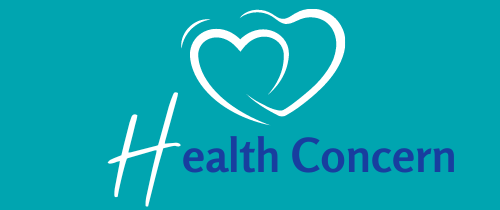Coronary Thrombosis (Heart Attack): A complete overview
There are three main coronary arteries surrounding the heart that supply it with blood and oxygen.
If a blood clot makes in one of these arteries, the blood supply to that district of the heart muscle will stop.
It is known as a heart attack or, in clinical terms, coronary thrombosis or myocardial infarction.
What is Coronary thrombosis?
Coronary thrombosis is the blockage of the coronary artery by a blood clot.
Coronary thrombosis is wrong as the thrombosis suggests the blockage of veins with a blood clot.
The plan of coronary thrombosis overall follows a part as other blood bunches in the body.
Coronary thrombosis is one of the consistent inspirations driving unexpected cardiovascular passing.
Also See:
Structural Heart Disease: Symptoms, Causes and Treatment
What is thrombosis?
A thrombosis is a blood clot in a vein or passageway.
If a thrombosis makes in a coronary artery, it hinders the blood supply from showing up in the heart muscle. It prompts a heart attack.
What happens in Coronary thrombosis?
Coronary thrombosis with extreme myocardial restricted rot is a risky condition.
It is associated with extended inauspiciousness and mortality generally.
Coronary clusters cause a downfall in 200,000 individuals in the United States, impacting males more than females.
The composing review shows that coronary coagulation causes 33% of the startling cardiovascular passing, completely obstructing the liable party vein on after-death assessment.
The total and range of coronary thrombosis play a part in choosing the estimate of ACS patients.
Symptoms
Coronary thrombosis is asymptomatic until it causes an enormous block, inciting various kinds of angina or myocardial infarction.
Certain people get chest tortures (angina), a sign that atherosclerosis has restricted the coronary courses.
Others have no secondary effects until the plaque breaks and cause any of the going with:
- sharp torture behind the chest bone or on the left-hand side of the chest, which could spread down the left arm (it can feel like stress on your chest)
- torture can exude towards the hands, jaw, ear, back, stomach, or the right arm
- a fixing sensation in or around the throat
- breathing difficulties
- unforeseen fainting or outrageous deliriousness, regularly joined by torture.
Causes behind Coronary Thrombosis
Atherosclerosis is the name given up to the type of cholesterol and fat (oily stores or plaques) in the course walls.
The veins become dainty and cemented, their flexibility disappears, and it turns out difficult for blood to flow through.
The oily plaques can break, making blood group around the burst.
If blood can’t then stream past the coagulation to the fundamental piece of the body, the tissue fails miserably.
Plaque burst is the most notable justification for heart attacks.
Most individuals have atherosclerosis in specific bits of their body while never seeing it.
Atherosclerosis becomes constantly long-term and can start when in pre-adulthood.
Danger signals
If you get severe chest tortures or any of the various incidental effects referred to above, it might be a signal of the blocked coronary artery.
People with known angina at present under clinical thought should watch out for the following.
If glyceryl trinitrate medicine used to manage the chest tortures no longer seems, by all accounts, to be acceptable.
It requires less work to invite on the desolations than it regularly does.
These are signs that coronary course disease is declining.
Angina typically happens exclusively after work or the like, and the genuine effort expected to all set is generally something almost identical to regular.
It is of concern when angina comes on with no work in any shape or form.
If chest tortures suddenly happen extremely still and last longer than 20 minutes, you should call 999 for a salvage vehicle.
Also See:
Hypertensive Heart Disease: Overview, Types & Treatment
At the clinical center, they can close whether this is a heart attack, angina, or something completely different.
What should I do if I experience chest pain?
- Get to a clinical facility as quickly as could be anticipated.
- Make an effort not to go to the crisis center yourself because your condition could crush on the way.
- Rest while keeping it together for the salvage vehicle.
- However long you don’t have cerebral pain medication responsiveness, chomp ibuprofen (Disprin) of 300mg strength (this reduces blood and further creates a circulatory system to the heart).
- If relatives or colleagues are close by, consider them and solicit that they come and hold on for the salvage vehicle with you.
- Remain even-headed and try not to get fretful may be irksome.
Diagnosis
Imaging modalities used to survey the presence of coronary thrombi:
- angioscopy
- end coronary ultrasound
- coronary angiography
- appealing resonation imaging (MRI)
Post-mortem experts could look for Lines of Zah to choose if blood thickened in the heart vessels or life following death.
Treatment
The chiefs of intriguing coronary thrombosis follow spread-out treatment estimations for myocardial infarction. Treatment decisions include:
- emergency coronary vein avoid joining together (CABG)
- stent implantation
- intracoronary thrombolysis
- anticoagulation with heparin or glycoprotein IIb/IIIa inhibitors
- blood clump want as a reperfusion strategy
The CURE fundamental in 2001 found that the development of clopidogrel showed a productive result on cardiovascular mortality, non-destructive MI, and stroke to the detriment of an extended bet of passing.
The COURAGE fundamental was appropriated in 2018 to address the possibility of perceiving and getting asymptomatic coronary artery disease hindering the improvement of coronary thrombosis.
Different meds by and by are being perused up for the board and expectation of coronary thrombosis.
Statin drugs have been to zero in on different pathways that could reduce coronary disturbance and cause thrombosis.
Another space of likely prescriptions in starting stage is in supportive use of separation ultrasound on clusters breaking down.
Risk factors
The bet factors related to coronary thrombus initiation consolidate smoking, diabetes mellitus, hypertension, hyperlipidemia, stress, and the family foundation of atherosclerosis.
Prognosis
The presence of coronary thrombus on angiogram is a negative pointer related to higher MACE (Major threatening cardiovascular events).
The coronary thrombus occludes the coronary artery and its branches.
The blood coagulation size and consistency are critical prognostic markers of distal embolization.
Different assessments have shown that distal embolization is with development in mortality.
Final words
Coronary thrombosis is the blocking of blood flow by a blood clot in a hallway giving blood to the heart.
Coronary thrombosis is a coronary hindrance, the blockage of a coronary vein branch by blood coagulation inside the vessel at a site restricted by arteriosclerosis.
This blood clot may then restrict the circulation system inside the heart, inciting heart tissue hurt or myocardial infarction called a heart attack.

